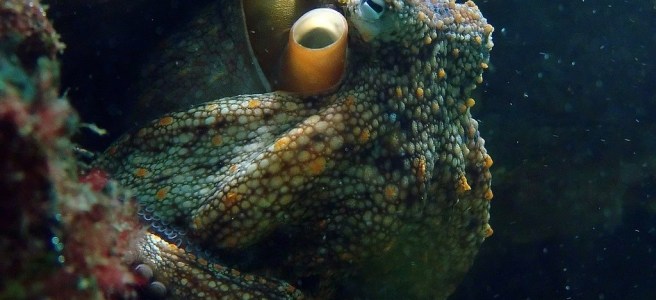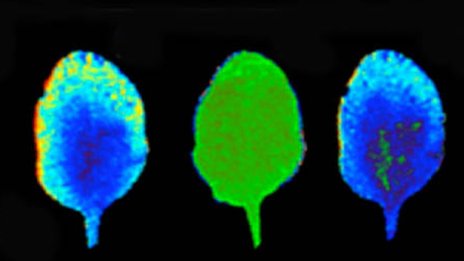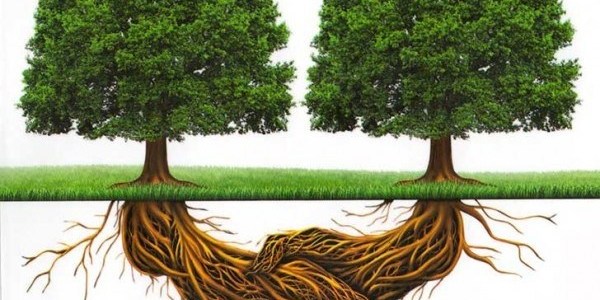Today’s synchronicities prompt today’s offering.
First, The Guardian posted a review of Philip Ball’s forthcoming The Book of Minds: How to Understand Ourselves and Other Beings, from Animals to Aliens, which is concerned with expanding the concept of intelligence to include the animal and even plant, a project readers here will recognize. Especially remarkable is the review’s concluding passage:
…most of our fantasies about advanced alien intelligence suppose it to be like us but with better tech. That’s not just a sci-fi trope; the scientific search for extraterrestrial intelligence typically assumes that ET carves nature at the same joints as we do, recognising the same abstract laws of maths and physics. But the more we know about minds, the more we recognise that they conceptualise the world according to the possibilities they possess for sensing and intervening in it; nothing is inevitable. We need to be more imaginative about what minds can be, and less fixated on ours as the default. As the biologist JBS Haldane once said: “The universe is not only queerer than we suppose, but queerer than we can suppose.” Our only hope of understanding the universe, he said, “is to look at it from as many different points of view as possible.” We may need those other minds.
Like, wow. Has Ball been a visitor, here?
Secondly, the Johns Hopkins University Press kindly shared an article from one of its periodicals, Josh Schuster’s “Critique of Alien Reason: Toward a Critical Interplanetary Humanities”. Schuster’s nod to the title of Kant’s magnum opus; the invocation of critique, as such; and the urge toward an expansion of the purview of the humanities (as per Jeffrey Kripal’s efforts) all echo concerns here at the Skunkworks.
Schuster examines the recursive relation between the potential discovery of an Extraterrestrial Intelligence (ETI) and that discovery’s consequences for our self-understanding and understanding of life on earth in general, but no less (which is important, here), the ways “The science of the search as well as the cultural and civilizational questions embedded in any possible contact event are connected [if not determined] fundamentally to established philosophical positions towards cosmology, alterity, and co-existence.” Among these evolving positions is the growing awareness “that we require a contemporary—and more-than-human—political model for how to share the planet as a whole,” not only with humankind, but all the earth’s other lifeforms, an essential thesis here at the Skunkworks. The urgency of this question is underlined by humanity’s marked, indeed catastrophic, failure to share the earth, either with its own kind or its animal and plant Others. In this regard, Schuster draws the inference—one often drawn here—that “The ironic failure to connect SETI and the search for inhabited exoplanets to habitability crises on Earth…means that SETI research is at risk of continuing to repeat the failure to share the biodiverse [and racially, culturally diverse] Earth.”
Schuster draws our attention to one fundamental flaw in SETI, rooted in its cultural embeddedness: “The long history of treating Black and Indigenous bodies as Other and alien is encoded in historical conceptualizations of extraterrestrial otherness,” a not uncomplicated matter. Shuster draws out the implications of this embeddedness: “The meaningfulness of SETI, in other words, does not depend alone on whether or not there is actual contact with ETIs. What SETI most compellingly offers is a place for public reflection on and enaction of a commitment to planetary sharing and cosmological commons.” Such reflection brings into play the recursiveness Schuster is at pains to illuminate:
Thinking humanistically about the planet, …would include thinking of what can be called the interplanetary humanities in the context of a potential plurality of worlds. SETI research and thinking envisaged thus would play a role in understanding Earth as a planet among planets and in shaping the trajectory of planetary thinking in the environmental humanities. The result is that the scientific and cultural implications of SETI will help inform the humanistic thinking about our planet and vice versa.
Deliciously, in this regard, Schuster lays out Kant’s “rational alienology” as discovered and originally researched by Peter Szendy, not to present it in and for itself but as “an opportunity to sketch out some of the basic conceptualizations that are implicit in what [Schuster discusses] as a chiasmus of Kant’s thinking of SETI and philosophy.” One implication of Kant’s reflections Szendy teases out is the startling insight that “thinking SETI does not necessarily mean actually thinking about aliens, but recognizing methodologically and formally how human consciousness imbricates within itself an alien consciousness. This alien consciousness is ultimately in a paradoxical way deeply intimate yet radically unthinkable at the same time.” Delightfully, “Szendy finds similar implications … in the work of Carl Schmitt, Edmund Husserl, Derrida, and Emmanuel Levinas, each of whom entertains at key moments how the alien point of view from exoplanetary space fundamentally changes conceptualizations of dwelling, cosmopolitanism, and human being on Earth.”
Schuster concludes his study with a reading of Ted Chiang’s “The Great Silence,” which “piercingly reflects on how the desire to look up at the skies and contemplate alien contact frequently corresponds to a refusal to look down and around at the forms of contact among interspecies others on Earth,” a frequent theme addressed here at the Skunkworks. Indeed, Schuster articulates a not uncommon thesis we ourselves has posited here:
The Fermi paradox, embedded in the Anthropocene, may be explained by the irony that the science and technology that allow a civilization to become spacefaring also relies on extractivism, exploitation, and climate-changing processes that undermines that planet’s life. Instead of asking aliens how to escape the bottleneck of the Anthropocene, it would be easier to ask counsel of our animal neighbors. The only way out of this paradox, as Chiang’s parrot recognizes, is that SETI must be folded into multispecies relations and multispecies relations into SETI. [my emphasis]
Here’s to more such chance encounters, not because their authors are likeminded, but because of what they bring and contribute to a shared, urgent body of concern.






